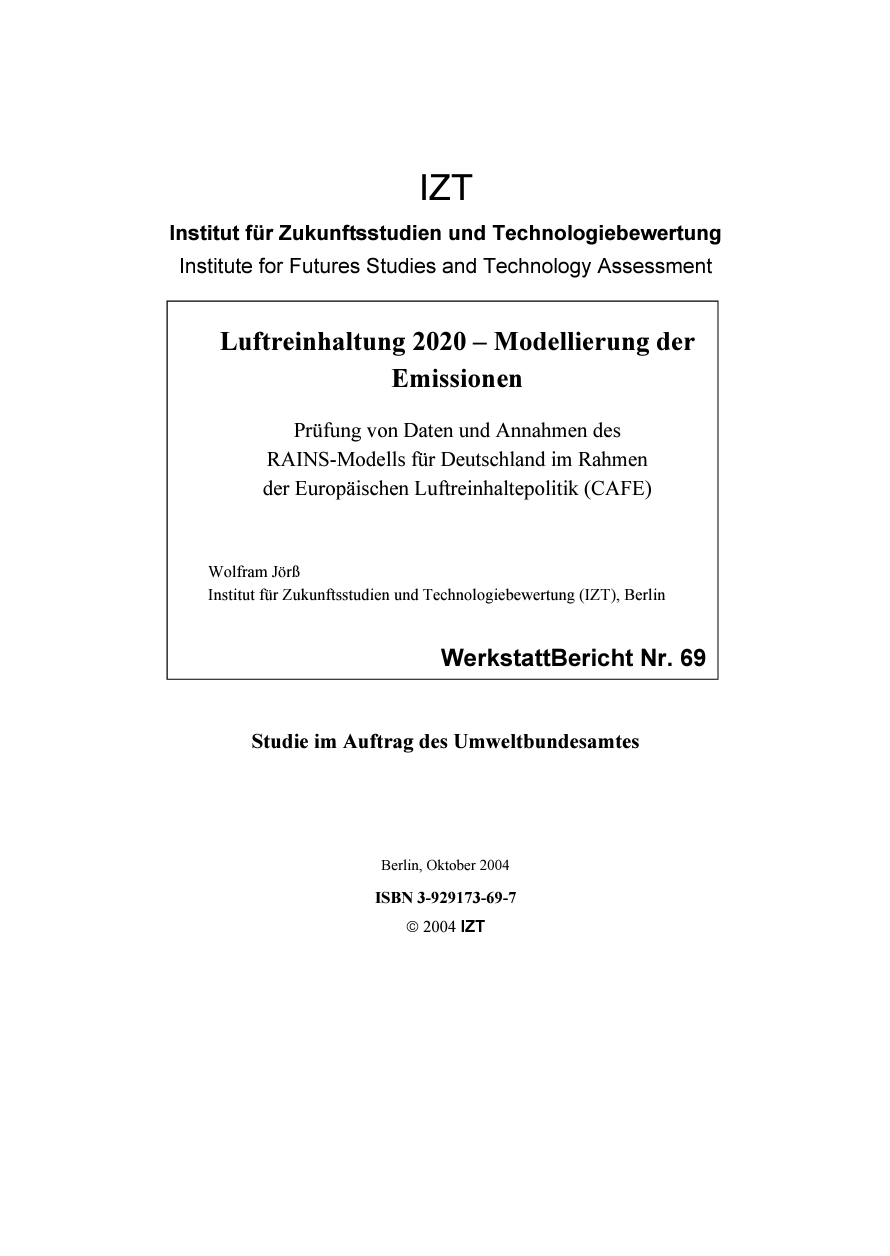Air Pollution Control 2020 - Modelling of Emissions
Abstract
As part of the European Union's Clean Air for Europe (CAFE) strategy, baseline scenarios for the development of the emissions and immissions situation in Europe will be drawn up in 2003/2004. This concerns the impact area of the "traditional" air pollutants sulphur dioxide (SO2), nitrogen oxides (NOx), ammonia (NH3), volatile hydrocarbons other than methane (NMVOC) and dust (in particular particulate matter) and has a time horizon up to 2020. The central tool for the scientific development of the baseline scenarios is the RAINS model, which is operated by the International Institute for Applied Systems Analysis (IIASA), Laxenburg, Austria.
To validate the model and the baseline scenarios, a scientific review of the entire model will be carried out on behalf of the EU Commission. On the other hand, a series of bilateral consultations between the European states and IIASA will be carried out, in which the states will have the opportunity to review the assumptions and data used for modelling and propose changes. The Federal Environment Agency (UBA) was scientifically supported in this work by the Institute for Futures Studies and Technology Assessment (IZT).
The Federal Environment Agency's review mandate to the IZT requires that the RAINS data be reviewed on the basis of data and instruments available at the UBA (i.e. primarily on the basis of the ZSE ) and that the review activities be coordinated with the responsible staff at the UBA. The review mandate does not include data from agriculture (emission factors and trends in livestock numbers) and fertiliser use, as responsibility for this lies with the Federal Ministry of Consumer Protection, Food and Agriculture (BMVEL). The review of the energy scenarios and, if necessary, the submission of a separate energy scenario was also not part of the commission to the IZT. The RAINS datasets on costs and cost curves were not to be reviewed due to the lack of availability of the data during the term of the commission.
The purpose of the review is to develop proposals for adapting the RAINS data and assumptions for Germany to the corresponding UBA information. This required extensive consultation with the relevant staff and training in the use of RAINS and its databases.
